
Nara Countryside: A Serene Escape into Japan's Heartland
Discover the tranquil beauty and rich heritage of Japan's Nara countryside, where ancient temples, lush landscapes, and local delicacies await.
Nestled in the heart of Japan, the Nara countryside offers a serene escape from the bustling cities. This picturesque region is known for its lush greenery, traditional villages, and ancient temples. As you wander through the narrow lanes, you'll encounter charming wooden houses, rice paddies, and friendly locals who are always ready to share a smile. One of the highlights of the Nara countryside is its rich history and culture. The area is home to some of Japan's oldest and most revered temples, including the famous Todai-ji Temple, which houses a giant Buddha statue. The Kasuga Taisha Shrine, with its hundreds of stone lanterns, is another must-visit spot that will take you back in time. Nature lovers will be delighted by the beautiful landscapes of the Nara countryside. The rolling hills, dense forests, and scenic rivers create a perfect backdrop for hiking, cycling, or simply relaxing. The region is also known for its seasonal beauty, with cherry blossoms in spring, vibrant foliage in autumn, and snow-covered landscapes in winter. Food enthusiasts will find plenty to savor in the Nara countryside. The area is famous for its fresh produce, including locally grown vegetables and fruits. Be sure to try some of the regional specialties, such as kakinoha-zushi (sushi wrapped in persimmon leaves) and yomogi mochi (mugwort rice cakes).
Local tips in Nara countryside
- Visit early in the morning to enjoy the peaceful atmosphere and avoid crowds at popular sites like Todai-ji Temple.
- Rent a bicycle to explore the countryside at your own pace and discover hidden gems off the beaten path.
- Check the local calendar for traditional festivals and events, which offer a unique glimpse into the region's culture and traditions.
- Wear comfortable shoes as many attractions involve walking on uneven terrain and through natural landscapes.
- Learn a few basic Japanese phrases to interact with locals, who may not speak much English but are very welcoming.
Nara Countryside: A Serene Escape into Japan's Heartland
Nestled in the heart of Japan, the Nara countryside offers a serene escape from the bustling cities. This picturesque region is known for its lush greenery, traditional villages, and ancient temples. As you wander through the narrow lanes, you'll encounter charming wooden houses, rice paddies, and friendly locals who are always ready to share a smile. One of the highlights of the Nara countryside is its rich history and culture. The area is home to some of Japan's oldest and most revered temples, including the famous Todai-ji Temple, which houses a giant Buddha statue. The Kasuga Taisha Shrine, with its hundreds of stone lanterns, is another must-visit spot that will take you back in time. Nature lovers will be delighted by the beautiful landscapes of the Nara countryside. The rolling hills, dense forests, and scenic rivers create a perfect backdrop for hiking, cycling, or simply relaxing. The region is also known for its seasonal beauty, with cherry blossoms in spring, vibrant foliage in autumn, and snow-covered landscapes in winter. Food enthusiasts will find plenty to savor in the Nara countryside. The area is famous for its fresh produce, including locally grown vegetables and fruits. Be sure to try some of the regional specialties, such as kakinoha-zushi (sushi wrapped in persimmon leaves) and yomogi mochi (mugwort rice cakes).
When is the best time to go to Nara countryside?
Iconic landmarks you can’t miss
Nara Park
Discover the enchanting Nara Park, where history, nature, and free-roaming deer come together in a breathtaking Japanese landscape.

Tōdai-ji
Discover Tōdai-ji, a UNESCO World Heritage site in Nara, Japan, home to the stunning Great Buddha and captivating ancient architecture.

Kasuga Taisha
Explore Kasuga Taisha, Nara's enchanting Shinto shrine adorned with thousands of lanterns, set amidst lush forests and rich cultural heritage.

Kofuku-ji
Explore Kofuku-ji Temple, a UNESCO World Heritage Site in Nara, Japan known for its stunning architecture, rich history, and serene gardens.

Horyu-ji
Discover the serene beauty and rich history of Horyu-ji, Japan's first UNESCO World Heritage Buddhist temple in Nara's captivating landscapes.

Heijō Palace Site Historical Park
Explore the Heijō Palace Site Historical Park, a UNESCO World Heritage site in Nara, where Japan's imperial history comes alive amidst stunning landscapes.

Toshodai-ji
Discover Toshodai-ji in Nara, a UNESCO World Heritage Buddhist temple showcasing exquisite architecture and serene gardens, steeped in Japan's spiritual heritage.

Ikomasanjo Amusement Park
Experience the thrill of rides and family fun at Ikomasanjo Amusement Park, a top destination for joy and adventure in Ikoma, Japan.

Gango-ji
Discover the tranquil beauty and spiritual essence of Gango-ji, a historic Buddhist temple and UNESCO World Heritage Site in Nara, Japan.
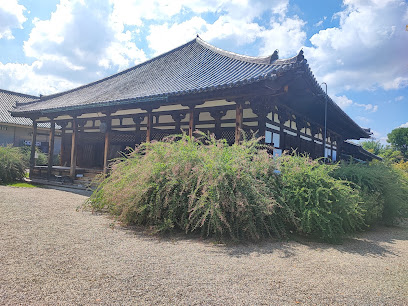
Fujiwara Palace Ruins
Discover the ancient echoes of Japan at the Fujiwara Palace Ruins, an archaeological gem revealing the splendor of the Fujiwara clan's imperial history.

Wakakusayama Hill
Discover the breathtaking views and serene hiking trails of Wakakusayama Hill, a scenic gem in Nara, Japan, perfect for nature lovers and culture enthusiasts.

Suzakumon Square
Experience the serene beauty and historical significance of Suzakumon Square in Nara, Japan, a perfect escape for nature lovers and culture enthusiasts.

Isuien Garden and Neiraku Museum
Explore the serene beauty of Isuien Garden and Neiraku Museum, where nature and art intertwine in the heart of Nara, Japan.

Yoshikien Garden
Explore the serene beauty of Yoshikien Garden in Nara, Japan – a harmonious blend of history, nature, and tranquility.

Nara Station
Discover Nara Station, the historic gateway to Japan's ancient treasures, connecting you to temples, parks, and unforgettable experiences.

Unmissable attractions to see
Grand Front Osaka
Experience the vibrant blend of shopping, dining, and entertainment at Grand Front Osaka, a modern hub in the heart of the city.

Kyoto Railway Museum
Discover the captivating history of Japan's railways at the Kyoto Railway Museum, featuring vintage trains and interactive exhibits for all ages.

Namba Grand Kagetsu
Discover the heart of Osaka's comedy scene at Namba Grand Kagetsu, where laughter and live performances create an unforgettable experience.

Arashiyama Monkey Park Iwatayama
Explore Arashiyama Monkey Park Iwatayama, where playful monkeys roam freely amidst breathtaking views of Kyoto's natural beauty.

Toei Kyoto Studio Park
Experience the enchantment of Japanese cinema at Toei Kyoto Studio Park, a captivating theme park filled with attractions, performances, and stunning movie sets.

Hirakata Park
Explore the thrills and beauty of Hirakata Park in Osaka, where adventure meets relaxation for an unforgettable family experience.

Osaka Ikuno Korea Town
Explore Osaka Ikuno Korea Town, a vibrant cultural enclave where authentic Korean cuisine and unique shopping await in the heart of Osaka, Japan.
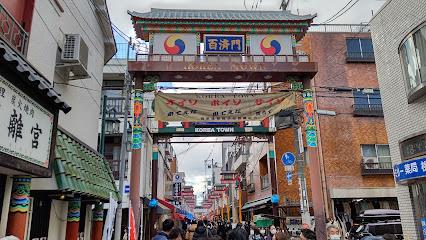
Horyu-ji
Discover the timeless beauty and spiritual depth of Horyu-ji, Japan's oldest wooden temple, a UNESCO World Heritage Site in Nara.

Kyoto City KYOCERA Museum of Art
Experience the fusion of traditional and contemporary art at the Kyoto City KYOCERA Museum of Art, a cultural treasure in the heart of Kyoto.

Kyoto Avanti
Explore Kyoto Avanti, a shopping mall that offers a perfect blend of traditional and modern shopping experiences in Kyoto, Japan.

Ishikiri Tsurugiya Jinja
Discover the tranquility and rich traditions of Ishikiri Tsurugiya Jinja, a stunning Shinto shrine in Higashiosaka, perfect for spiritual seekers and culture enthusiasts alike.

Daigo-ji
Experience the serene beauty and rich cultural heritage of Daigo-ji, a UNESCO World Heritage Buddhist temple in Kyoto, Japan.

Heijō Palace Site Historical National Park
Explore the Heijō Palace Site Historical National Park, a UNESCO World Heritage site in Nara, where history and nature beautifully intertwine.

Osaka City Central Public Hall
Discover the iconic Osaka City Central Public Hall, a stunning blend of history and culture in the heart of Osaka, perfect for events and leisurely exploration.

The Cultural Museum of Kyoto
Explore the rich history and vibrant culture of Kyoto at The Cultural Museum of Kyoto, a must-visit destination for every traveler.

Essential places to dine
Tonkatsu Ganko Nara
Savor authentic tonkatsu in Nara at Tonkatsu Ganko - where tradition meets taste!
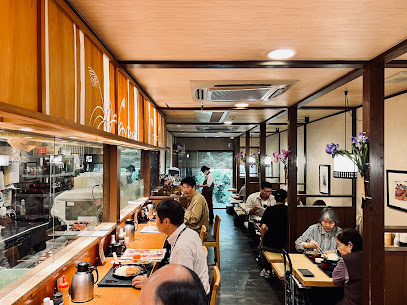
Kamameshi Shizuka Kouen-ten志津香
Savor the essence of traditional Japanese cuisine at Kamameshi Shizuka Kouen-ten in Nara - where every bite tells a story.

Kokkyo Shokudo
Discover authentic Japanese flavors at Kokkyo Shokudo in Nara - where tradition meets taste in every delightful dish.

Maguro Koya
Experience authentic Japanese cuisine at Maguro Koya in Nara – where every meal is a celebration of tradition and flavor.

Mizuya Chaya
Discover authentic Japanese flavors at Mizuya Chaya, where tradition meets modernity in the heart of Nara.

Kameya
Experience authentic Japanese flavors at Kameya in Nara – where okonomiyaki meets izakaya delights in a cozy atmosphere.

Edogawa - Naramachi
Experience authentic Japanese cuisine at Edogawa - Naramachi in historic Nara, featuring expertly grilled unagi and traditional delicacies.

Izasa-Nakatani-hompo Yumekaze-hiroba
Experience authentic Japanese cuisine at Izasa-Nakatani-hompo Yumekaze-hiroba, where fresh sushi meets rich cultural heritage in Nara.
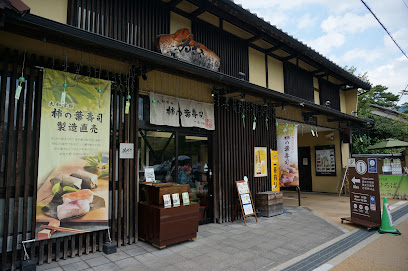
Yamatoan Honten
Discover Yamatoan Honten: A culinary haven in Nara offering authentic Japanese kaiseki cuisine and fresh seafood delicacies.

Unagino Kawahara
Discover the authentic taste of Japan at Unagino Kawahara - where tradition meets flavor in every dish.
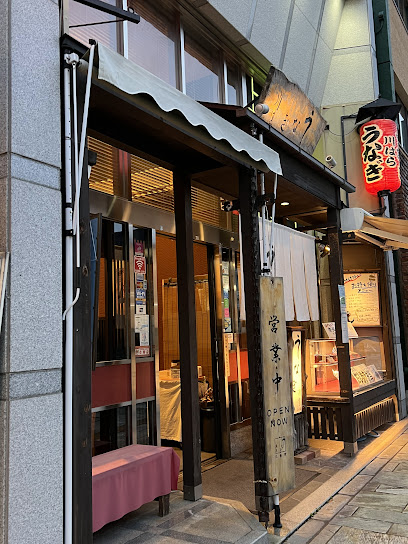
Main Dining Room 'Mikasa'
Experience the finest French cuisine in Nara at Main Dining Room 'Mikasa', where elegance meets exceptional flavors.

Okonomiyaki Parco
Discover authentic Japanese flavors at Okonomiyaki Parco in Nara - where delicious okonomiyaki meets vibrant dining culture.

Monsieur Pépé
Experience authentic French cuisine at Monsieur Pépé in Nara—where culinary artistry meets cozy charm.

La Terrasse
Experience exquisite French cuisine at La Terrasse in Nara – where culinary artistry meets serene Japanese landscapes.

Tori Tamura
Experience the best of Japanese cuisine at Tori Tamura in Nara – from mouthwatering yakitori to traditional izakaya delights.

Markets, malls and hidden boutiques
Aeon Mall Kashihara
Discover unparalleled shopping and dining at Aeon Mall Kashihara in Nara, Japan, where tradition meets modern retail and entertainment.

Nara Family
Experience the vibrant shopping and cultural scene at Nara Family, a premier shopping mall in the heart of Nara, Japan.

Mi Nara
Explore Mi Nara: A unique shopping and entertainment destination in Nara, blending tradition with modern fun for all ages.
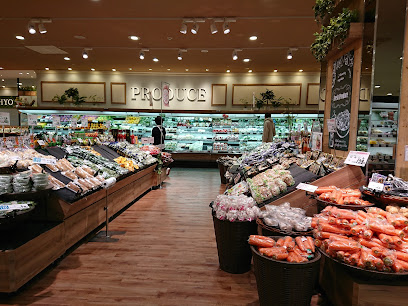
Kintetsu Department Store Nara
Discover a world of shopping at Kintetsu Department Store Nara, where traditional Japanese goods meet modern retail experiences.

Higashimuki Shopping Street
Explore the vibrant Higashimuki Shopping Street in Nara, where traditional culture meets modern shopping in a delightful atmosphere.

Kintetsu-Nara Station
Experience the heart of Nara at Kintetsu-Nara Station, your gateway to the city's cultural gems and historical wonders.

Nara Station
Discover the ancient wonders of Nara from Nara Station, your gateway to Japan's cultural heritage and beautiful landscapes.

AEON TOWN Tomiominami
Explore AEON TOWN Tomiominami, Nara's premier shopping destination with diverse shops, dining options, and family-friendly entertainment.

NARA Visitor Center & Inn
Explore the heart of Nara at the NARA Visitor Center & Inn, where your adventure into Japan's ancient treasures begins.

Yamato-Saidaiji Station
Discover Nara's Cultural Treasures with Yamato-Saidaiji Station as Your Gateway to History and Adventure.

Mochiido Center Town
Experience the essence of Nara at Mochiido Center Town, a vibrant shopping mall blending modern retail and traditional charm.

Nakagawa Masashichi Shoten - Nara Flagship Store
Explore Nakagawa Masashichi Shoten in Nara for unique handicrafts, stylish clothing, and authentic Japanese souvenirs that celebrate local artistry.

Yumekaze Plaza
Experience the perfect blend of shopping, dining, and culture at Yumekaze Plaza in Nara, Japan, where tradition meets modernity.

Silkia Nara
Explore the vibrant Silkia Nara shopping mall, where local culture meets modern retail in a unique shopping experience in the heart of Nara.

Sanjo Dori Shopping Mall
Explore the Sanjo Dori Shopping Mall in Nara, where shopping and culture merge for an unforgettable experience.

Essential bars & hidden hideouts
LAMP BAR
Discover the vibrant atmosphere of Lamp Bar in Nara, where modern bar culture meets traditional Japanese hospitality for an unforgettable night out.
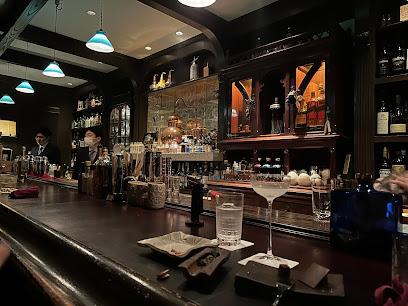
Savant
Discover Savant, Nara's top bar, offering exquisite cocktails and a vibrant atmosphere that reflects the best of Japanese hospitality.
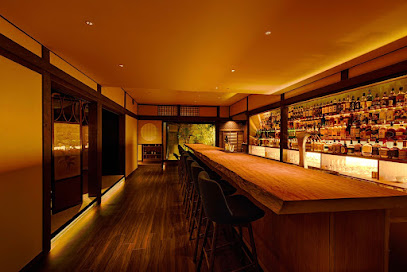
Light
Experience the lively atmosphere and local flavors at Light, a charming pub in the heart of Nara, Japan.

blue note Naramachi
Discover the heart of Nara's jazz scene at Blue Note Naramachi, where live music and a relaxed atmosphere await every visitor.
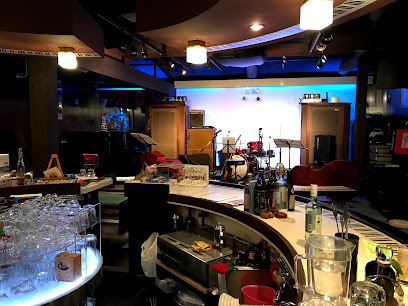
AUTHENTIC TABLE TAVERN
Experience the finest Western cuisine in Nara at Authentic Table Tavern, where delightful flavors meet warm hospitality.
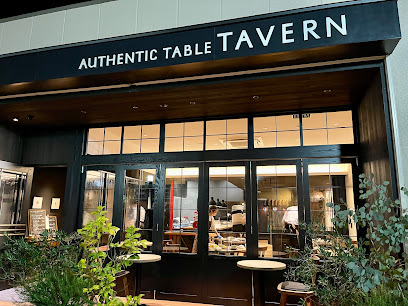
THE SAILING BAR
Experience the charm of The Sailing Bar in Nara, where exquisite cuisine meets a nautical-themed ambiance for a night to remember.

Amberjack
Experience the vibrant nightlife of Nara at Amberjack, where expertly crafted cocktails and a cozy atmosphere await you.
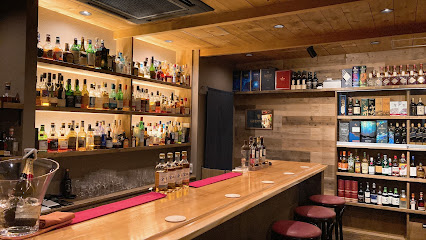
Old Time
Discover the charming Old Time bar in Nara, where tradition meets modernity in a cozy atmosphere, perfect for savoring local drinks.

Bar Sally / Sally's Curry
Discover the unique blend of bar culture and authentic Japanese curry at Bar Sally in Yamatokoriyama, Nara, for an unforgettable dining experience.

BARスターライト 日本一のバーテンダーのお店
Discover Nara's Starlight Bar, a cocktail haven where Japan's top bartenders craft exquisite drinks in an inviting atmosphere.

Salon des vins Sève
Discover the enchanting world of wines at Salon des Vins Sève, a cozy wine bar in Nara, Japan, perfect for relaxation and indulgence.
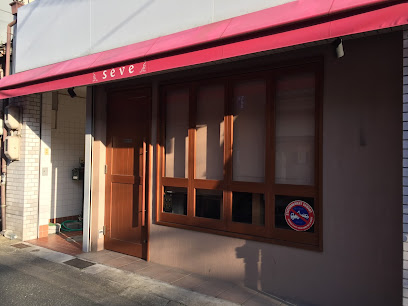
Nara, Bar.d
Experience the lively nightlife at Nara, Bar.d, where darts, karaoke, and friendly vibes create unforgettable moments in the heart of Nara.

SK Music At Brazilian Bar
Discover the vibrant nightlife at SK Music at Brazilian Bar in Nara, where live music meets a cozy atmosphere for an unforgettable experience.

和 in Cafe nagomi(ワイン カフェ なごみ) 奈良 富雄店 ワインバー 昼飲み 歓迎
Discover the serene charm of Cafe Nagomi, a wine bar in Nara perfect for unwinding with exquisite wines and delicious snacks.

Bar PIRATES
Discover the lively pirate-themed Bar PIRATES in Nara, where you can enjoy an extensive drink menu and vibrant nightlife in a unique atmosphere.
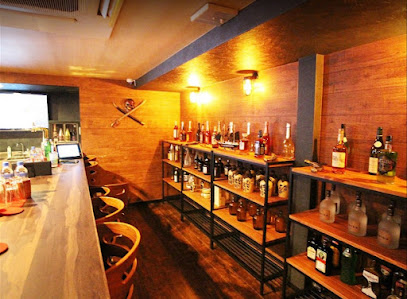
Local Phrases about Nara countryside
-
- Helloこんにちは
[konnichiwa] - Goodbyeさようなら
[sayonara] - Yesはい
[hai] - Noいいえ
[iie] - Please/You're welcomeどうぞ
[douzo] - Thank youありがとう
[arigatou] - Excuse me/Sorryすみません
[sumimasen] - How are you?お元気ですか?
[ogenki desu ka?] - Fine. And you?元気です。あなたは?
[genki desu. anata wa?] - Do you speak English?英語を話せますか?
[eigo o hanasemasu ka?] - I don't understandわかりません
[wakarimasen]
- Helloこんにちは
-
- I'd like to see the menu, pleaseメニューを見せてください
[menyuu o misete kudasai] - I don't eat meat肉を食べません
[niku o tabemasen] - Cheers!乾杯!
[kanpai!] - I would like to pay, pleaseお会計をお願いします
[okaikei o onegaishimasu]
- I'd like to see the menu, pleaseメニューを見せてください
-
- Help!助けて!
[tasukete!] - Go away!行け!
[ike!] - Call the Police!警察を呼んで!
[keisatsu o yonde!] - Call a doctor!医者を呼んで!
[isha o yonde!] - I'm lost迷子です
[maigo desu] - I'm ill具合が悪いです
[guai ga warui desu]
- Help!助けて!
-
- I'd like to buy...買いたいです...
[kaitai desu...] - I'm just looking見てるだけです
[miteru dake desu] - How much is it?いくらですか?
[ikura desu ka?] - That's too expensiveそれは高すぎます
[sore wa takasugimasu] - Can you lower the price?値引きしてもらえますか?
[nedashiki shite moraemasu ka?]
- I'd like to buy...買いたいです...
-
- What time is it?今何時ですか?
[ima nanji desu ka?] - It's one o'clock一時です
[ichiji desu] - Half past (10)十時半です
[juuji han desu] - Morning朝
[asa] - Afternoon午後
[gogo] - Evening夕方
[yugata] - Yesterday昨日
[kinou] - Today今日
[kyou] - Tomorrow明日
[ashita] - 1一
[ichi] - 2二
[ni] - 3三
[san] - 4四
[shi] - 5五
[go] - 6六
[roku] - 7七
[shichi] - 8八
[hachi] - 9九
[kyuu] - 10十
[juu]
- What time is it?今何時ですか?
-
- Where's a/the...?...はどこですか?
[...wa doko desu ka?] - What's the address?住所は何ですか?
[juusho wa nan desu ka?] - Can you show me (on the map)?地図で見せてもらえますか?
[chizu de misete moraemasu ka?] - When's the next (bus)?次の(バス)はいつですか?
[tsugi no (basu) wa itsu desu ka?] - A ticket (to ....)(...)までのチケットをください
[(...) made no chiketto o kudasai]
- Where's a/the...?...はどこですか?
History of Nara countryside
-
The Nara countryside, located in the Kansai region of Japan, has a rich history that dates back to prehistoric times. Archaeological evidence suggests that early human settlements in this area were established around the Jomon period (14,000 - 300 BCE). These early inhabitants relied on hunting, gathering, and rudimentary farming to sustain their communities.
-
During the Asuka period (538 - 710 CE), the Nara countryside became a significant cultural and political center. It was during this time that Buddhism was introduced to Japan, profoundly influencing the region. The Asuka region, located in the southern part of Nara Prefecture, was home to the first Buddhist temples in Japan, such as Asukadera, which was established in 588 CE.
-
The Nara period (710 - 794 CE) marked the establishment of Heijo-kyo (modern-day Nara city) as Japan's first permanent capital. This era saw the flourishing of Japanese culture, arts, and religion. The countryside surrounding Heijo-kyo was dotted with temples and palaces, and it played a crucial role in supporting the capital's economy and cultural activities. The Todai-ji Temple, home to the Great Buddha, was constructed during this period and remains a significant historical site.
-
In the medieval period, from the Kamakura (1185 - 1333) to the Muromachi (1336 - 1573) periods, the Nara countryside was characterized by the rise of feudal estates and samurai culture. The region's fertile lands were divided among various daimyo (feudal lords), who controlled agricultural production and local governance. The Todaiji Temple and other religious institutions also held significant land holdings and influence during this time.
-
During the Edo period (1603 - 1868), the Nara countryside underwent significant agricultural development. The Tokugawa shogunate implemented policies that promoted rice cultivation and improved irrigation systems. Villages and small towns in the region thrived, and local markets became important centers for trade and commerce. Traditional crafts, such as Nara ink and paper, also developed during this period.
-
The Meiji Restoration (1868) brought about major changes in the Nara countryside as Japan rapidly modernized. The feudal system was abolished, and land reforms allowed farmers to own their land. The introduction of modern infrastructure, such as railways and roads, connected the rural areas with urban centers. Despite these changes, the Nara countryside retained much of its traditional charm and cultural heritage.
-
After World War II, the Nara countryside faced challenges related to urbanization and industrialization. However, efforts to preserve the region's historical and cultural sites intensified. In 1998, the historic monuments of ancient Nara, including several sites in the countryside, were designated as UNESCO World Heritage Sites. These efforts have helped maintain the area's historical integrity and continue to attract visitors from around the world.
Nara countryside Essentials
-
Nara countryside is accessible from various parts of Japan. The nearest major city is Osaka, which is served by Kansai International Airport (KIX). From Osaka, you can take the JR Yamatoji Line to Nara Station. The journey takes about 45-50 minutes by express train. Alternatively, if you are coming from Tokyo, you can take the Shinkansen (bullet train) to Kyoto and then transfer to a local train to Nara. The entire trip takes around 3.5 hours.
-
Once in Nara, you can explore the countryside using a combination of local trains, buses, and taxis. The Kintetsu Railway offers convenient routes to various parts of Nara Prefecture. Renting a bicycle is also a popular option for tourists wanting to explore at a leisurely pace. For more remote areas, renting a car provides flexibility and convenience.
-
The official currency in Japan is the Japanese Yen (JPY). Credit cards are widely accepted in urban areas, but in the countryside, cash is still king. Make sure to carry enough cash, especially if you plan to visit smaller shops, restaurants, and rural areas. ATMs are available at convenience stores like 7-Eleven and Lawson, which are spread across Nara.
-
Nara countryside is generally very safe for tourists. Crime rates are low, and violent crime is rare. However, it is still advisable to keep an eye on your belongings, especially in crowded areas. There are no specific high-crime areas targeting tourists, but always stay vigilant and avoid isolated areas at night.
-
In case of an emergency, dial 110 for police and 119 for fire and ambulance services. Medical facilities in rural areas may be limited, so it is advisable to have travel insurance that covers medical emergencies. Most towns have pharmacies where you can buy over-the-counter medications. For serious health issues, you may need to go to a larger hospital in Nara city or Osaka.
-
Fashion: Do dress modestly, especially when visiting temples and shrines. Avoid wearing revealing clothing. Religion: Do show respect at religious sites. Remove your shoes when entering temples and participate respectfully in rituals. Public Transport: Do be punctual and quiet on public transport. Don’t speak loudly or use your phone. Greetings: Do bow slightly when greeting people. A handshake is less common but still acceptable. Eating & Drinking: Do try local delicacies and follow local dining etiquette. Don’t stick your chopsticks upright in your rice, as it resembles a funeral rite.
-
To experience Nara countryside like a local, visit during the off-peak seasons to avoid crowds. Participate in local festivals and engage with the community. Try staying at a traditional ryokan (Japanese inn) for an authentic experience. Don’t miss visiting the ancient temples and shrines, such as Horyu-ji and Todai-ji, which offer a glimpse into Japan’s rich history. Also, take the time to hike through scenic routes like the Yamanobe-no-Michi trail, which is Japan's oldest road.
Nearby Cities to Nara countryside
-
Things To Do in Osaka
-
Things To Do in Kyoto
-
Things To Do in Nagoya
-
Things To Do in Kanazawa
-
Things To Do in Hiroshima
-
Things To Do in Tokyo
-
Things To Do in Fukuoka
-
Things To Do in Ulsan
-
Things To Do in Pohang
-
Things To Do in Gyeongju
-
Things To Do in Busan
-
Things To Do in Andong
-
Things To Do in Daegu
-
Things To Do in Suncheon
-
Things To Do in Daejeon













